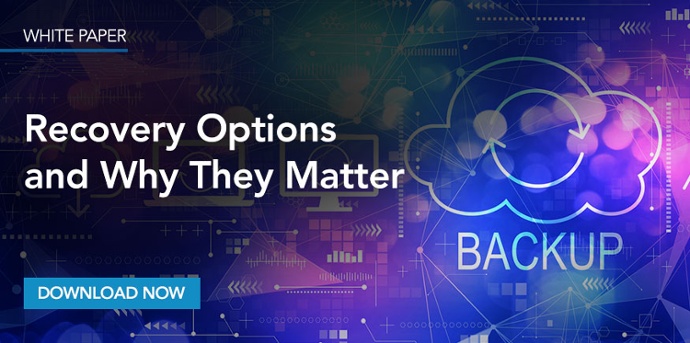Business owners and IT managers understand that data and applications form the backbone of their enterprises. They facilitate connections between employees and customers, maintain system operations, and ensure efficient information storage and access.
There may come a time, however, when unplanned downtimes occurs, either as a result of an unforeseen event like a fire or weather emergency, technical issues or data corruption, or more nefarious activity like infiltration from bad actors who might attack your system from the outside.
Either way, it can mean real headaches, not to mention considerable loss of revenue when your data and apps are inaccessible.
The key factor during data and app loss is a swift recovery. The faster your systems are up and running and your data and apps are fully functional and accessible again, the quicker you can mitigate damage and revenue shortfall.
To address this challenge, businesses can choose from several system recovery strategies tailored to their specific needs.
Types of System Recovery Strategies
When considering a system recovery plan, you have three main strategies at your disposal: High Availability, Warm Availability, and Cold Standby Recovery.
Each strategy offers advantages based on your current and future needs, as well as your budget. Let’s explore how each strategy safeguards and recovers your critical systems, data, and apps during an outage or unexpected downtime:
-
High Availability Strategy:
With this option, your mission-critical resources are replicated in real-time to a comparable target system; it basically builds a mirror image of your source system on a target system.
Your essential resources might range from servers, clusters and applications, to databases, storage arrays, and network resources. It’s wise to store replicated resources offsite to keep them protected in the event your source data and apps are unexpectedly down or offline.
With High Availability, should an outage occur, all or a designated portion of your production processing is automatically or manually switched over to the target system. The target resources are now working as though they were your original resources. When both systems are synced, processing reverts to the original source, leaving the target as a High Availability backup. Hence the name.
The advantages of the High Availability strategy include minimum application and user downtime, rapid recovery time, the ability to switch or take systems offline instantaneously, and a low Recovery Point Objective with minimal data loss. If keeping mission-critical components available with minimal downtime, then High Availability is a great recovery strategy. It’s that simple
-
Warm Availability Strategy
This recovery strategy offers many of the benefits of High Availability — without the use of continuous replication to keep data and apps in sync. With Warm Availability, you’ll have all the dedicated hardware and software resources of the original source, housed in a distant location. They’re occasionally refreshed to keep all systems comparable in both locations using external media, disk-based backup, or a cloud vaulting system.
In the event of an outage, the ‘warm’ system must have its data refreshed from the last known backup of the source system. They also have a better Recovery Time Objective than a cold standby server, which must be rebuilt from scratch after an outage.
Warm Availability ensures that dedicated target systems are always on standby and configured to a late version of your source system; the target only needs to be refreshed and not provisioned. IT has the option of switching to the target system immediately without a data refresh, and processing can switch to the target in a matter of hours. In addition, Warm Availability means lower software, administrative and operational costs.
If your systems and components can handle some outages — just hours, perhaps — then Warm Availability is an ideal option for your business.
-
Cold Standby Strategy:
The Cold Standby option is a logical recovery strategy for businesses that run non-critical applications and servers with fewer issues should an outage occur. It’s also ideal for servers where the data is infrequently updated and can be reloaded from an old backup. It’s also a sound solution for companies with budgetary constraints. With the Cold Standby recovery strategy, a redundant replica, or cold server, of a primary server is available in a recovery environment.
The cold server is staged with the Operating System loaded, with the same resources as the primary server allocated. Should an outage occur, the cold server is activated, and data and applications will need to be restored from the last known successful backup of its primary server. Some support will likely be needed to restore the entire source system and its data before it will be ready to operate at peak efficiency.
In short, the Cold Standby recovery option is the most affordable of the three strategies. In addition, resources can be segmented and managed by different groups while still meeting Recovery Time Objective and Recovery Point Objective requirements.
Choosing the Right Strategy
A CloudFirst representative can help you determine the right system recovery strategy for your business today and in the future. Contact us to get started on choosing the ideal recovery strategy for your company.


